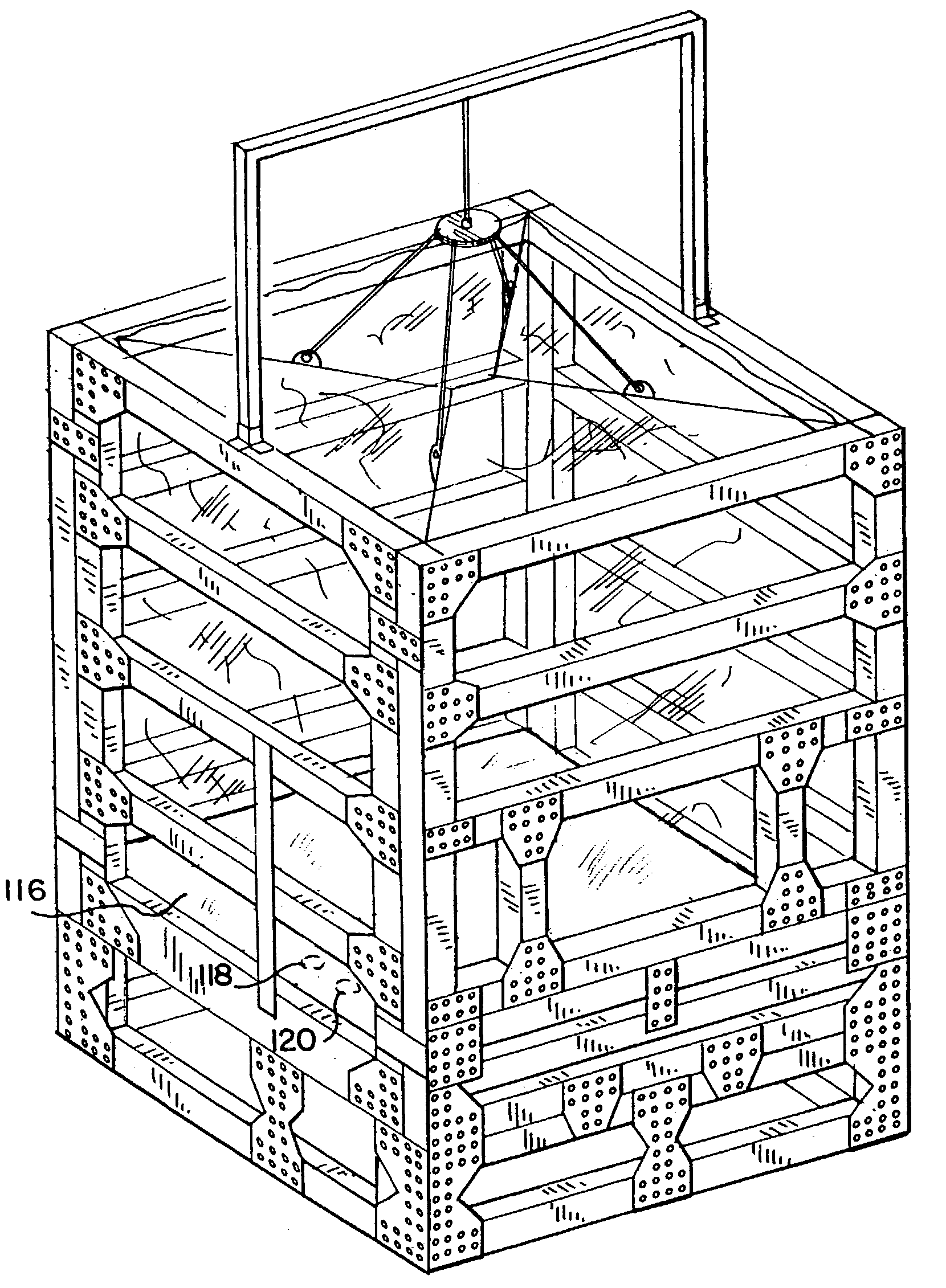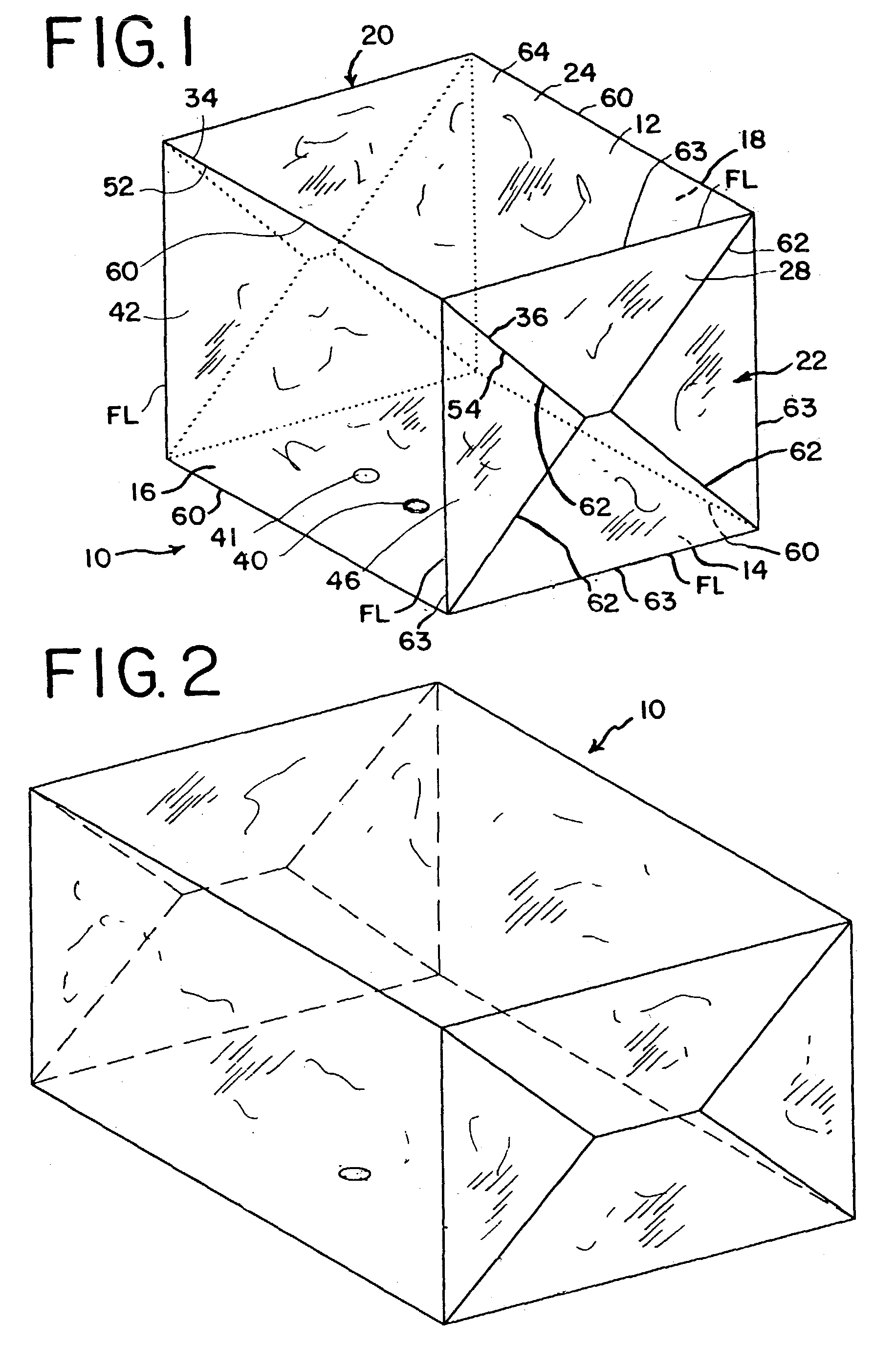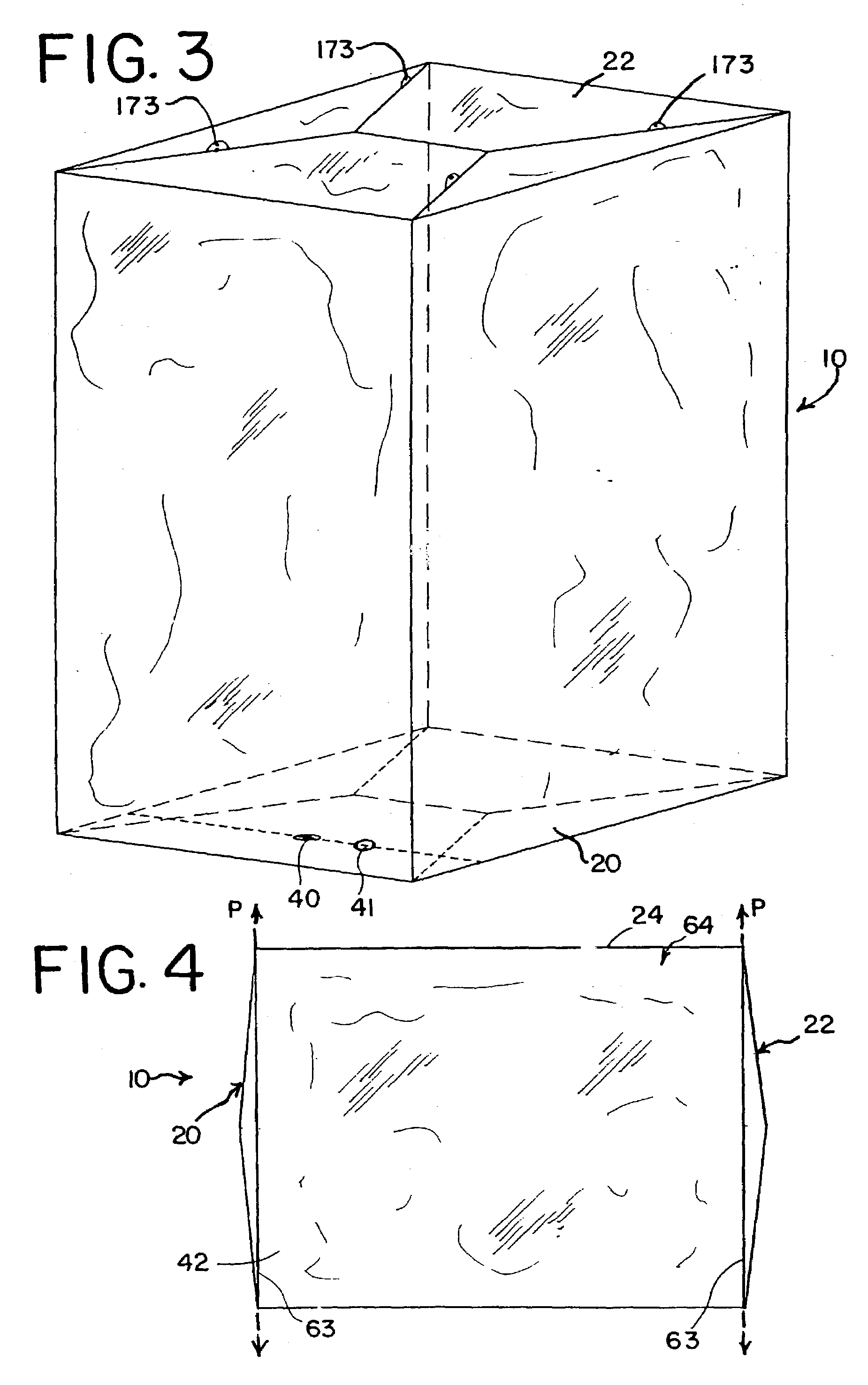Container support
a container and support technology, applied in the field of flexible containers, can solve problems such as leakage of containers, failure of containers, and certain problems encountered
- Summary
- Abstract
- Description
- Claims
- Application Information
AI Technical Summary
Benefits of technology
Problems solved by technology
Method used
Image
Examples
Embodiment Construction
[0051]While this invention is susceptible of embodiments in many different forms, there is shown in the drawings and will herein be described in detail a preferred embodiment of the invention with the understanding that the present disclosure is to be considered as an exemplification of the principles of the invention and is not intended to limit the broad aspect of the invention to the embodiments illustrated.
[0052]Referring to the drawings, FIG. 1 shows a container made in accordance with the present invention generally referred to with the reference numeral 10. The container 10 is a three-dimensional container capable of holding large amounts of fluid. The container 10 shown in FIG. 1 holds approximately 200 liters of fluid. The container 10, however, can be made in a variety of sizes. For example, FIG. 2 shows a container 10 sized to hold approximately 500 liters of fluid, and FIG. 3 shows a container 10 sized to hold approximately 1500 liters of fluid. The container 10 has a un...
PUM
 Login to View More
Login to View More Abstract
Description
Claims
Application Information
 Login to View More
Login to View More - R&D
- Intellectual Property
- Life Sciences
- Materials
- Tech Scout
- Unparalleled Data Quality
- Higher Quality Content
- 60% Fewer Hallucinations
Browse by: Latest US Patents, China's latest patents, Technical Efficacy Thesaurus, Application Domain, Technology Topic, Popular Technical Reports.
© 2025 PatSnap. All rights reserved.Legal|Privacy policy|Modern Slavery Act Transparency Statement|Sitemap|About US| Contact US: help@patsnap.com



